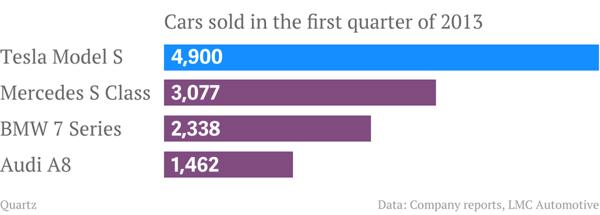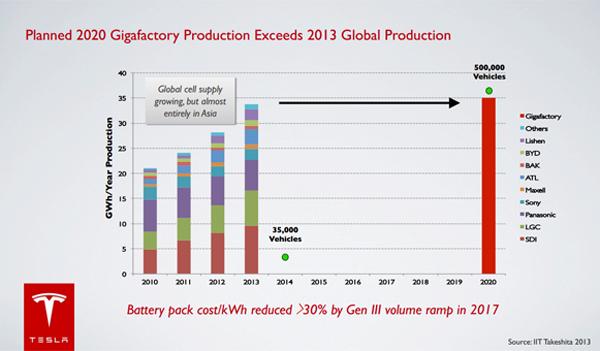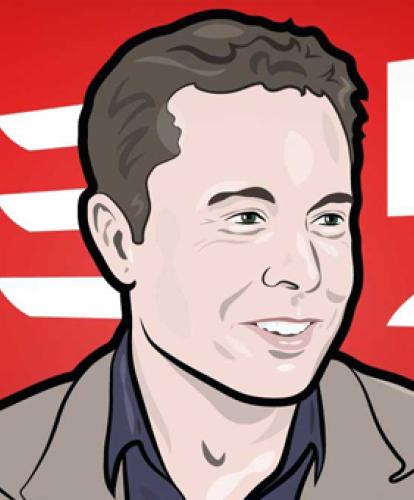From the outset Tesla Motors, directed by CEO Elon Musk, has stated their ambition is to sell affordable electric vehicles to the mass market. With clever and methodical business decisions and by establishing itself in the luxury car market, they certainly seem on course to deliver on this objective.
Tesla, which founded in 2003, made its first move with the production of the Tesla Roadster’s, the first fully electric sports car. Even as a newbie car maker, this model caught the public’s imagination and sold 2,500 car worldwide between 2008 and 2012.
Building on the experience gained through with the Roadster, Tesla’s next move was to take on the premium executive market head on, launching the Model S, first in the US in 2013, with a right hand drive version being launched to the UK market in June 2014.
Over the last year and a half in the US, the Model S has taken the autotive world by strorm. Although still a new entrant, sales figures in the first quarter of 2013 showed the car was out selling luxury car rivals by a significant margin, even beating both the Mercedes S Class and BMW 7 Series hands down – see Chart below.

With a range of 300 miles off a single charge, the Model S is at the forefront of electric vehicle technology. Boosted by the best performance and sales in its class, in the first quarter of 2013, Tesla posted profits for the first time in its ten year history.
It is Tesla’s leading EV and charging technology that has provided a platform to build the brand and attract investment.
Tesla is also pushing technology on the charging front as well with their Supercharger network, which can be accessed by Model S owners for free. Supercharger points offer 120kW of power, allowing a Model S to regain 130 miles of range in under 20 minutes.
Readying itself for its next stage of expansion, this week saw Tesla Motors pause production at its electric vehicle (EV) assembly plant in Fremont for two weeks to make improvements to the facility, with the goal of boosting production and building the new electric Model X SUV.
The $100 million upgrade will add 25 robots and modify the factory’s body and general assembly lines, confirmed Simon Sproule, a Tesla spokesman.
“This represents the single biggest investment in the plant since we really started operations and enables us for higher volumes,” Sproule added “It gets us ready to build X and to do it on the same line as the S.”
Tesla Gigafactory
Not satisfied with disrupting the automotive sector, Tesla is also aiming to challenge the battery production status quo. The news to revamp the Fremont facility comes in preparation of Tesla’s game-changing Gigafactory.
Earlier in 2014, Tesla Motors announced it intended to build the world’s largest lithium-ion battery plant by 2020, with a capacity that exceeds current global production volume.
According to a statement issued by Tesla: [The plant] “will allow us to achieve economies of scale and minimize costs through innovative manufacturing, reduction of logistics waste, optimization of co-located processes and reduced overhead.
“By the end of the first year of volume production of our mass market vehicle, we expect the Gigafactory will have driven down the per kWh cost of our battery pack by more than 3%.”

This huge project is forecast to cost between around $4-5 billion in investment through 2020 and could employ up to 6,500 people. It will be half funded by Tesla themselves, who estimate their contribution will be in the region of $2 billion.
Tesla hopes to cut the cost of batteries by at least 30% and although the factories will supply batteries for other purposes, such as solar power storage, the main focus will be on electric cars. They will supply their own plant in Fremont, but also plan on providing other manufacturers with lithium ion batteries, in alignment with their open source philosophy.
The reduction in battery cost will be a major component driving down Tesla’s prices. The Model 3 was announced last week as the third electric car to feature on Tesla’s roster. What’s more, Mr Musk has confirmed it will be the most affordable model yet, expected to be approximately half the price of a Model S.
The announcement on where the initial Gigafactories will be built is approaching, anticipated to be revealed in the next month. Tesla has said it is studying sites in Arizona, California, Nevada, Texas and New Mexico. To find out more about the Tesla’a Gigafactory plans, download their February 2014 presentation.
Ultimately, Tesla is seeking to offer an EV with a similar range or better range than the Model S at over half the price. While there is still a long way to go before this can be achieved, so far everything appears to be running according to Tesla’s grand plan.
While there are few certainties in life and none in the automotive sector, Zapmap thinks Tesla has a good chance of being one of the major car makers of the 21st century.
For a colorful commentary on the Model S, check out the Oatmeal.
Bloomberg, Next Green Car, Tesla



